
 |
|
|||||||
|
Family Members join our new Facebook group sponsored by NavyDEP: https://www.facebook.com/groups/Rtcgreatlakes
|
 |
|
|
Thread Tools | Display Modes |
|
|
#301 |
|
Newbie
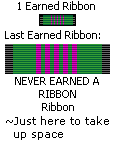 Join Date: Mar 2016
Location: Pennsylvania
Posts: 9
Rep Power: 0  |
Hello, I'm currently in the process of joining the navy and I would like to be an AWO Aircrewman. Due to some circumstances I would have a choice of shipping soon and going in as FTS or waiting a long time and going AD. Would i be able to go FTS AWO? Which is a better lifestyle, AD or FTS? I go to meps on Monday so any additional information would be much appreciated.
|
|
|

|
|
|
#302 | |
|
**Active Duty**
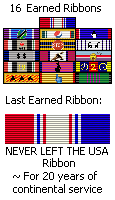 Join Date: Mar 2012
Location: Pacific Northwest
Posts: 1,439
Rep Power: 0       |
Quote:
My advice if you want AWO is to stick it out for the AD slot and use the time to physically prepare yourself for Aircrew Candidate School. |
|
|
|

|
|
|
#303 | |
|
**Active Duty**
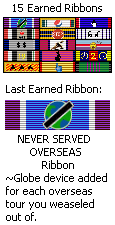 Join Date: Jul 2014
Location: Secret Secret
Posts: 1,284
Rep Power: 0       |
Quote:

|
|
|
|

|
|
|
#304 |
|
Newbie
 Join Date: Mar 2016
Location: Pennsylvania
Posts: 9
Rep Power: 0  |
Hello. Update: I swore into the navy yesterday with an Aircrew contract, I leave May 18th. Any tips for me to prepare aswell as tips once i get in? I have been training for this job in the physical aspect. I've been swimming 5 miles a week for quite some time. Along with running 30-40 miles a week. Also lifting weights and doing as many bodyweight exercises i could think of. Any tips would be much appreciated.
|
|
|

|
|
|
#305 | |
|
**Active Duty**
 Join Date: Jul 2014
Location: Secret Secret
Posts: 1,284
Rep Power: 0       |
Quote:
For the running, I would say you don't need to do that much distance. The longest run we did was around 5 miles (grad runs). So instead of just pure distance, switch up days between distance and then sprint intervals. The sprint intervals will help with your run times while the distance keeps your cardio up. The biggest thing a lot of people failed on was that last PST test. Having a crappy run time is what sank the vast majority of the guys who failed. As far as swimming goes, just make sure you're comfortable in the water. You'll be doing plenty of endurance swims and each day you'll be doing treads with more and more gear on (ie flight suit, boots, vest, helmet, etc). /r CTT1 |
|
|
|

|
|
|
#306 |
|
Newbie
 Join Date: Mar 2016
Location: Pennsylvania
Posts: 9
Rep Power: 0  |
Thank you! For my rating inside of Aircrew, I would like to be a AWO or AWF (flight engineer side). So my other question would be what would I have to do to accomplish this and when does this selection take place?
|
|
|

|
|
|
#307 | |
|
**Active Duty**
 Join Date: Jul 2014
Location: Secret Secret
Posts: 1,284
Rep Power: 0       |
Quote:
Nothing you do really will have much impact, as the LPO of the school is just given a number quota for each job to fill and 9 times out of 10 he just fills it up and lets you know where he put you. Occasionally he'll let the top few people in the class get a pick, but I've personally seen it go both ways. So don't let people tell you that you're 100% going to get a pick because there is a very legitimate chance they just hand you a rate as well. (again, seen both happen while I was there) AWF's on the FE side of the house are also losing a lot of positions as the Navy decommissions the P-3 and moves to the P-8. They're moving those guys into C-2 or E-6 platforms, but the opportunity is going to be a lot less than it used to be seeing as they have to do something with all the guys they already have now. AWO is pretty common though (90% of my class ended up there) and they will still be in use with the new P-8 platform. /r CTT1 |
|
|
|

|
|
|
#308 |
|
Newbie
 Join Date: Mar 2016
Location: Pennsylvania
Posts: 9
Rep Power: 0  |
For the rate of AWO, how difficult is the A-School? Like do you study things like math or is it more about your aircraft and how it operates? Also how long is the typical pipeline, taking into affect being on holds?
|
|
|

|
|
|
#309 |
|
**Active Duty**
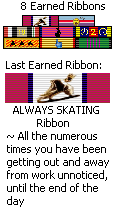 Join Date: Nov 2013
Location: Everywhere
Posts: 418
Rep Power: 0  |
We're being flooded with AWFs now. We need more AWF2's and higher though. As an AWF FE on the E-6b platform, you're technically an FE trainee until you make E-5. Prepare to do lots of FE bitch work until you make it there
 AWF1 and higher is where it's at AWF1 and higher is where it's at
|
|
|

|
|
|
#310 |
|
Junior Member
 Join Date: Aug 2014
Posts: 47
Rep Power: 0  |
My son is graduating this week - he is an AWF and headed to Oklahoma next week... Excited for his next step in this crazy journey
|
|
|

|
|
|
#311 |
|
**Active Duty**
 Join Date: Nov 2013
Location: Everywhere
Posts: 418
Rep Power: 0  |
|
|
|

|
|
|
#312 |
|
Newbie
 Join Date: Apr 2016
Posts: 3
Rep Power: 0  |
Whoa whoa, I went to meps the 8th of march, swore in the 9th, got accepted into the Aircrewman program and was offered FTS (They informed it was one of the best programs too get into..fts that is...stupid fast advancement/etc)
I dont ship till sept 28th, howd u get in after me and get shipped out in may @Austin_andres and one more question, Haasino, what do you mean FTS doesnt get too pick AWO.. I was informed ill get too choose from AWO. AWF. AWV even while FTS... Is this not true? Theyve lied too me multiple times, saying family will go to move with me too schooling in pensacola ( im 26, married, and 2 kids) come too find out they wont.. and multuple more reasons. HELP. Last edited by ByrgeB; 04-21-2016 at 01:45 PM. |
|
|

|
|
|
#313 | |||
|
**Active Duty**
 Join Date: Mar 2012
Location: Pacific Northwest
Posts: 1,439
Rep Power: 0       |
Quote:
You don't learn anything about your aircraft until you get your follow-on orders and go to the applicable Fleet Replacement Squadron for ~1 year. Total training pipeline from RTC to operational squadron is about 2 years. Quote:
Quote:
You'll most likely be assigned AWF out of NACCS and attend AWF "A" School across the base in Pensacola... since NACCS is "officially" a 3 week school, and "A" School is about a month or so, you are correct that the Navy will not pay to relocate your family because they don't factor in the hold times waiting to class-up... so you may be in Pensacola for over 6 months... but the Navy still considers it TAD follow-on orders from RTC. After "A" School, you'll get assignment to a VR squadron flying the C-40 or C-130, and from there they'll determine whether you'll go to the squadron or do more follow-on training. FTS AWF doesn't go through SERE, but they do go through C-40 Transportation Safety Specialist training with either Delta or American Airlines (Whichever has a flight attendant class open first), or loadmaster training for C-130s. |
|||
|
|

|
|
|
#314 |
|
Newbie
 Join Date: Apr 2016
Posts: 3
Rep Power: 0  |
1 and 1/2 year of AirC School and Training too become a AWF a be a flight attendant. How awesome..
Just crazy that my recruiter has informed me totally wrong this whole time. Everytime I ask a question, he just informs me he doesnt know much about AIRC programs. Just contacted a large recruiting office in Tennessee that is good in the AIRC program, They pulled quotas up and informed me the last 296 people that tried for AWO, 0% was filled. Everyone currently coming out of Schooling is placed into AWF. while 9% is getting AWV. Sad.. |
|
|

|
|
|
#315 | |
|
Newbie
 Join Date: Mar 2016
Location: Pennsylvania
Posts: 9
Rep Power: 0  |
Quote:
|
|
|
|

|
|
|
#316 | |
|
Newbie
 Join Date: Mar 2016
Location: Pennsylvania
Posts: 9
Rep Power: 0  |
Quote:
|
|
|
|

|
|
|
#317 |
|
Newbie
 Join Date: Apr 2016
Posts: 3
Rep Power: 0  |
What's a good break down of a normal day for a AWF.
|
|
|

|
|
|
#318 |
|
Newbie
 Join Date: Mar 2016
Location: Pennsylvania
Posts: 9
Rep Power: 0  |
What does the flight physical consist of? What are some reasons someone would be disqualified?
|
|
|

|
|
|
#319 |
|
**Active Duty**
 Join Date: Mar 2012
Location: Pacific Northwest
Posts: 1,439
Rep Power: 0       |
I can only comment on IBNFE Local 8251... aka, P-3 FE's. E-6, C-2, and VR AWF's are a completely different and foreign entity to me.
As a P-3 FE, you'll be assigned to work in one of the mech shops such as powerplants, airframes, maintenance control, etc. Your basic daily workload will be based on maintenance needs, or if you're on Duty FE, where you'll standby in case maintenance needs to spin up an engine for testing. It's basically just a hand-on physical with about 6 tubes of blood tested for anything and everything, an exam of your sinuses and chest cavity, and an EKG to make sure your heart is normal. The huge disqualifiers that are ulikely to be waived are sinus issues, heart issues, and color blindness. |
|
|

|
|
|
#320 | |
|
**Active Duty**
 Join Date: Jul 2014
Location: Secret Secret
Posts: 1,284
Rep Power: 0       |
Quote:
I can't speak for the Air Force, but in the Navy that has nothing to do with anything outside of what jobs you might qualify for. /r CTT1 |
|
|
|

|
|
|
#321 |
|
**Active Duty**
 Join Date: Oct 2014
Posts: 38
Rep Power: 0  |
Hey guys! Just an update for y'all. I'm in Jacksonville right now going through P-3 flight engineer school. This school is no joke. But I'm learning a crap ton I'd never even think about in real life. And there are some FTS fe's here.
|
|
|

|
|
|
#322 |
|
**Active Duty**
 Join Date: Oct 2014
Posts: 38
Rep Power: 0  |
And a little to add on my previous comment, from what we are hearing is that fe's are about 50% manned right now so they are hurting for us in the fleet. That being said, they are doing everything they can to help us get through this school. Like I said, it's no joke and I have already been rolled once but I'm better off for it. I'm doing much better now. They have a lot of help here for those who need it so if anyone gets p-3 fe orders, and want to get through this school, the instructors will do their best to help you learn the knowledge you will need to pass.
|
|
|

|
|
|
#323 |
 Join Date: Aug 2016
Posts: 1
Rep Power: 0  |
This is an awesome thread. Lots of info...
I read on another site that hay fever will disqualify you. Is this a diagnoses question or do they test for it? I imagine everyone gets some form of runny nose when exposed to high levels of pollen and its interesting that this would disqualify you. I understand some people have a more severe reaction to pollen so what is the extent they will allow it. Thanks. |
|
|

|
|
|
#324 | |
|
**Active Duty**
 Join Date: Jul 2014
Location: Secret Secret
Posts: 1,284
Rep Power: 0       |
Quote:
What the flight doc is going to base that on is how often do you have symptoms, how much does it complicate things, and what the actual state of your sinuses are (IE do you have polyps, cysts, something like that). Typically seasonal allergies are not considered disqualifying, however sinus issues that are consistent or have a large impact would be considered disqualifying. The reason for this is barotrauma. If your sinuses are all blocked up then your they're going to have a significantly harder time equalizing as you change altitude. Military aircraft change altitude MUCH faster than a civilian aircraft in some cases, so if you're sinuses aren't working correctly then it could case some major issues. Things like blowing your ear drums out or having extreme ear pain, nose bleeds, hearing loss, etc. If you were to experience those in flight it could jeopardize you, your crew, and the mission as a whole (IE they might have to land just for you). /r CTT1 Source: NAMI Aeromedical Reference and Waiver Guide |
|
|
|

|
|
|
#325 |
|
Senior Member
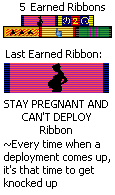 Join Date: Oct 2014
Location: Wouldn't you like to know?
Posts: 119
Rep Power: 0  |
Just wanted to stop by and say I'm jealous of all the aircrew types.
If I stay enlisted after I get outta Japan and cross rate to CTX, I'd love to join you all. |
|
|

|
|
|
#326 | |
|
**Active Duty**
 Join Date: Jul 2014
Location: Secret Secret
Posts: 1,284
Rep Power: 0       |
Quote:
If you're looking for some fun though, UAVs might be possible for the right people/backgrounds, also Spec War is available for 2nd tour (2nd tour as a CT) guys. /r CTT1 |
|
|
|

|
|
|
#327 | |
|
Senior Member
 Join Date: Oct 2014
Location: Wouldn't you like to know?
Posts: 119
Rep Power: 0  |
Quote:
V/r YNSN |
|
|
|

|
|
|
#328 |
 Join Date: Aug 2016
Posts: 1
Rep Power: 0  |
Im an e-1 in a-pact who leaves for rtc next week I want to become aircrew is this possible im eligible for advanement to e-2 in rtc and if so how do I go about becoming aircrew Ill take any rating in aircrew
|
|
|

|
|
|
#329 | ||
|
**Active Duty**
 Join Date: Mar 2012
Location: Pacific Northwest
Posts: 1,439
Rep Power: 0       |
Quote:
Quote:
You can study the Enlisted Community Managers page for more info... the short version is that AWO is closed to anyone but other Aircrew rates like AWF and AWV converting in... AWF is only open to E-5's in aviation maintenance rating for the E-6B Mercury and C-2 Greyhound... and AWV is not open for convert-in opportunities at all. The only possible option would be to go into the Naval Special Warfare program and try to Rescue Swimmer on the MH-60R or MH-60S helo's. |
||
|
|

|
|
|
#330 | |
|
**Active Duty**
 Join Date: Jul 2014
Location: Secret Secret
Posts: 1,284
Rep Power: 0       |
Quote:
A lot of the transition plans involving the EP-3 and it's personnel are still classified. But suffice to say it will be much different than what it is today, both manning and platform wise. I got to attend a town-hall kind of meeting with all the head-honchos that are planning this whole thing though and I feel much more comfortable with what they want to do and how they want to do it. Although we as CT's will be doing the same thing, it will be very different at the same time. There's your smoke and mirrors for the afternoon, courtesy of your friendly neighborhood spook! /r CTT1 |
|
|
|

|
|
|
#331 |
|
Newbie
 Join Date: Aug 2016
Location: Pacific Northwest
Posts: 12
Rep Power: 0  |
I have lurked a couple times previously on this forum page to better inform myself about AIRC. I am currently shipping out to RTC on the 23rd and can not wait to get started.
It is nice to see that a lot of people are willing to jump on the ball and share as much information as they can to us new people entering the Navy and AIRC program. With that said, I have seen that AIRC as AWS can go into Helos but seem to be going to the MH-53 like I have seen Haasino mention in previous comments. Though can an AIRC/AWS get placed on to a MH-60 or some other sort of helo? I spent some time at the airshow, speaking with a few Marine Aircrew and they shared that if I wanted to end up trying to get onto a helo/ rotary wing that I should let them know at some point in time at NACCS? I know things are at the needs of the navy, and with the switching to P-8s I hear most new AIRC are going AWO. Completing NACCS and to be able to receive a rating within AW would be amazing no matter what it is given to me. Being apart of the aviation community with the Navy is what I have wanted since I can remember. |
|
|

|
|
|
#332 | |||
|
**Active Duty**
 Join Date: Jul 2014
Location: Secret Secret
Posts: 1,284
Rep Power: 0       |
Quote:
Quote:
Basically, the LPO of the school house will get a list of how many spots of each rate that he needs to fill from each class. Now he may take student desires into account, or he may not. It also depends on what he's given; say maybe someone wants to go AWF but all he has are 20+ AWO quotas. In that situation, he wouldn't have a choice anyway even if he really wanted to give you something else. Make sense? Quote:
FLY NAVY! /r CTT1 |
|||
|
|

|
|
|
#333 | |
|
Newbie
 Join Date: Aug 2016
Location: Pacific Northwest
Posts: 12
Rep Power: 0  |
Quote:
Definitely makes sense, I appreciate the answers. Have they moved people from AIRC to AIRR while they were at NACCS, or offered it if they felt the person had the ability to make it as an rescue swimmer? I know there is the PST for AIRR, I guess another situation based on the needs of the Navy? Appreciate it, I will keep the drive and attitude! It would be an honor to fly with people like you two!!! |
|
|
|

|
|
|
#334 |
|
**Active Duty**
 Join Date: Jul 2014
Location: Secret Secret
Posts: 1,284
Rep Power: 0       |
Personally, I never saw them move someone from AIRC to AIRR while I was at NACCS, but that doesn't mean it couldn't happen. I'm not aware of any instruction that doesn't allow it, although not saying one doesn't exist.
CT's don't stay very long at all at NACCS compared to the straight out of boot camp guys (the huge majority of CT aircrew are fleet returnees, not new sailors), so maybe Hassino could add some on that one since he was there longer than I was. If AIRR is something you want to do though, I would highly recommend you go in as such (ship as one I mean). RSS is physical but it's doable; it's not BUD/S. If your PST scores are good and you feel very comfortable in the water and swimming a lot, I would consider it. /r CTT1 |
|
|

|
|
|
#335 | |
|
Newbie
 Join Date: Mar 2016
Location: Pennsylvania
Posts: 9
Rep Power: 0  |
Quote:
|
|
|
|

|
|
|
#336 | ||
|
Newbie
 Join Date: Aug 2016
Location: Pacific Northwest
Posts: 12
Rep Power: 0  |
Quote:
Quote:
That is awesome man, congrats for graduating soon!!! While in NACCS, how do you get put into the Class leader, Assistant, and Cadence Caller roles? I am older age wise, I know they technically won't treat me any different but maybe I will have that advantage over some of the younger ones going through NACCS? As awesome as it would be to be placed onto a helo, not going to be the end of the world if I don't. Specially since AW has so many amazing options to go down! What have you got placed into rating wise within AW? Any information on the base in Norfolk? |
||
|
|

|
|
|
#337 | |
|
**Active Duty**
 Join Date: Jul 2014
Location: Secret Secret
Posts: 1,284
Rep Power: 0       |
Quote:
If you keep coming back to AIRC then just do it. There really isn't a bad job in Aircrew IMO. If you end up going P-8, enjoy it. THOSE THINGS ARE CUSH AS HELL! Actual bathrooms, nice chairs, new displays, the works. They're luxury compared to most P-3's haha On the class leadership front, when I was there last year they usually picked a lot of the BUD/S Duds (guys who dropped from BUD/S and re-rated) since they have a little more time in than most of you guys do. If you have a Petty Officer in your class it'll be hit or miss on if they pick them. Petty Officers already have leadership experience from the Fleet, so it's better to get you junior guys in a leadership role in a training environment to help you develop. **Note: That doesn't mean you suddenly outrank said Petty Officers. Don't be that guy that forgets that because you will be loudly and publically corrected in a hurry. Only saying that since some guys don't figure that out** /r CTT1 Last edited by FlyNavy; 09-26-2016 at 06:05 AM. |
|
|
|

|
|
|
#338 | ||
|
Newbie
 Join Date: Aug 2016
Location: Pacific Northwest
Posts: 12
Rep Power: 0  |
Quote:
People that are BUD/S Duds aren't usually coming to NACCS as petty officers right? So I am guessing the Petty Officers coming through NACCS are usually some sort of CT that has been in for 8-12 years? If so will be nice having those people around with that type of experience being in the Navy for so long!!! Will the CT go through the whole training that we go through SERE school etc, after NACCS? Quote:
I appreciate you taking the time to answering all my questions! |
||
|
|

|
|
|
#339 | |||
|
**Active Duty**
 Join Date: Jul 2014
Location: Secret Secret
Posts: 1,284
Rep Power: 0       |
Quote:
Aka we find, track, and help eliminate the bad guys. There isn't an operation out there that doesn't need us to find the bad guys, track them, find out what they're doing, and help eliminate them. Quote:
The CT's you'll meet could be pretty new, but expect around 5-10 years of service on average. As intelligence folks, we actually go through more SERE training than you will. After the initial SERE we have several follow-on courses that you guys won't go to. Be happy about that because they weren't fun haha Quote:
GET SOME! /r CTT1 |
|||
|
|

|
|
|
#340 | |
|
Newbie
 Join Date: Mar 2016
Location: Pennsylvania
Posts: 9
Rep Power: 0  |
Quote:
|
|
|
|

|
|
|
#341 | ||
|
Newbie
 Join Date: Aug 2016
Location: Pacific Northwest
Posts: 12
Rep Power: 0  |
Quote:
Thank you, I have been all over the past couple months trying to gain all the knowledge that I can from who I can. I have had some good talks with a fellow redditor who is a instructor at an FRS school and this site has been amazing pool of knowledge! I couldn't ask for more meeting the people who have passed knowledge on to me, yet possibly being able to serve by their side!! I think I am in a good position going to RTC, hitting excellent line for the PFA in all categories for my age bracket. I obviously know my sailors creed and memorized all 11 general orders. Still haven't fully got down in detail how they want us to explain everyone's collar devices and patche etcs. But I do know how to recognize them and who is who!! Quote:
|
||
|
|

|
|
|
#342 | |
|
**Active Duty**
 Join Date: Jul 2014
Location: Secret Secret
Posts: 1,284
Rep Power: 0       |
Quote:
I promise you will contemplate your entire life in there, who you are, why you're doing this, and how much it's really worth to you. If you make it through however, you'll leave with what I can only describe as a PROFOUND new sense of what freedom means and the real sacrifice it takes to defend it. Not just the movie BS. The real deal. /r CTT1 |
|
|
|

|
|
|
#343 | |
|
Newbie
 Join Date: Aug 2016
Location: Pacific Northwest
Posts: 12
Rep Power: 0  |
Quote:
LOL, I was thinking the same thing. Sounds like quite the adventure and experience to truly test every aspect of your self. Even after NACCS, and A school do a lot of people have a hard time adjusting physically or mentally or even possible both when it comes to SERE school then? This hits the spot. It truly makes me think of whats to come and how lucky we are to have the chances to make something of ourselves not just in the Navy or for the matter at hand any other branch of military(Navy is the best!!!).. but within ourselves to provide something greater for the next generation, sometimes it truly blows my mind and I am glad to be a part of this. All this said might be cheesy to others, but I am ready to make a difference! |
|
|
|

|
|
|
#344 | |
|
**Active Duty**
 Join Date: Jul 2014
Location: Secret Secret
Posts: 1,284
Rep Power: 0       |
Quote:
Mentally, they will get inside your head and live there. It's not a matter of "if", it's how soon and how bad. Some people didn't do so hot and others did a little better. No matter what though, both you and the people around you will see sides of each other you never thought you would. It's eye opening to say the least. /r CTT1 |
|
|
|

|
|
|
#345 |
|
Senior Member
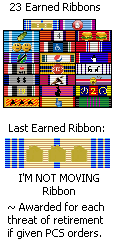 Join Date: Oct 2010
Posts: 2,858
Rep Power: 0    |
@tasteytots
Theres a thread with info about Norfolk. http://www.navydep.com/forums/showthread.php?t=7252 I'm stationed there so can answer more specific questions too. |
|
|

|
|
|
#346 | ||
|
Newbie
 Join Date: Aug 2016
Location: Pacific Northwest
Posts: 12
Rep Power: 0  |
Quote:
What are some important things you would recommend to someone about to head into all this training? Quote:
All though what would be like to have my motorcycle up in Norfolk? Weather wise? |
||
|
|

|
|
|
#347 | |
|
Senior Member
 Join Date: Oct 2010
Posts: 2,858
Rep Power: 0    |
Quote:
However, traffic here can be a bit rough. I know two people in the last year who have had career ending motorcycle accidents here. Personally I wouldn't ride here, but a lot of people do. |
|
|
|

|
|
|
#348 | |
|
**Active Duty**
 Join Date: Jul 2014
Location: Secret Secret
Posts: 1,284
Rep Power: 0       |
Quote:
Your job for the next few months isn't to think, it's to be a sled dog basically. There's a reason you're going to be taught certain things in the way they teach it, and usually those reasons are written in blood. So just keep a positive mental attitude and do it their way; you'll be fine  /r CTT1 |
|
|
|

|
|
|
#349 | |
|
Newbie
 Join Date: Aug 2016
Location: Pacific Northwest
Posts: 12
Rep Power: 0  |
Quote:
So I know as AW we get the automatic promote to E-4, but I have seen different answers on when we get it. Is it after A school? I know an LS that go a promotion for finishing numero uno in his A school, is the possible in most training pipelines? Such as getting to E-5 before hitting the fleet? I mean I guess nothing is impossible? |
|
|
|

|
|
|
#350 | |
|
**Active Duty**
 Join Date: Jul 2014
Location: Secret Secret
Posts: 1,284
Rep Power: 0       |
Quote:
And no you shouldn't be hitting PO2/E5 before you're in the fleet, and that's not a bad thing. A Second Class Petty Officer is expected to be a technical expert in their job, starting to take on some more heavy responsibilities in the shop, and start looking to their 1st class to take some of those duties as well. If you were to come to the shop as a PO2, with no experience, you would fail immediately and very publically. Not to say you aren't a hard worker or anything, but nothing can replicate the experience of a seasoned Petty Officer. Not having the proper training and background and then expecting you to perform at that level just sets you up for failure. Rank is much more than just a pay grade in the Navy. I know some other branches don't quite look at it like that, but if you're wearing that rank on your collar then you better be performing to those standards. Getting up to those standards requires the experience you get from working your way up. You would also be required to lead the junior guys in the shop; how could you do that if that E3 has several years in that job and you're just showing up? You really gonna tell that guy how he needs to be doing his job? haha Just some food for thought ^_^ /r CTT1 |
|
|
|

|
 |
|
|